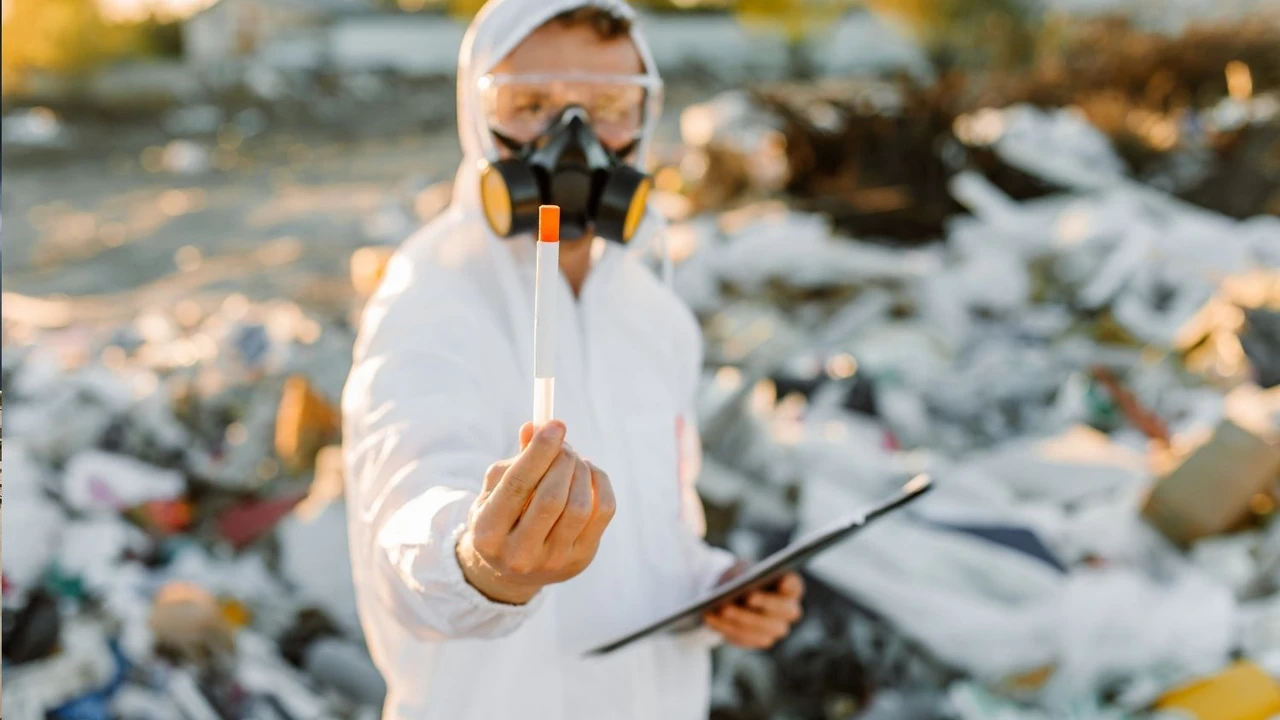5 Types of Product Defects Explained
Understand the 5 main categories of product defects that can lead to personal injury claims.

Understand the 5 main categories of product defects that can lead to personal injury claims.
5 Types of Product Defects Explained
Hey there! Ever bought something, used it, and then it just… didn't work right? Or worse, it actually caused you harm? That's where product defects come into play, and understanding them is super important, especially if you're considering a personal injury claim. We're going to break down the five main types of product defects that can lead to personal injury claims, giving you the lowdown on what to look for, some real-world examples, and even a peek at how these things are handled in the USA versus Southeast Asia. Plus, we'll chat about some specific products and their potential pitfalls. Let's dive in!
Understanding Product Defects What You Need to Know
When a product causes injury, it's often because there's something wrong with it – a 'defect.' These aren't just minor annoyances; they can lead to serious harm, medical bills, lost wages, and a whole lot of stress. Product liability law is all about holding manufacturers, distributors, and retailers responsible when their faulty products hurt consumers. It's a complex area, but knowing the different types of defects is your first step in understanding your rights.
Type 1 Manufacturing Defects When Something Goes Wrong in Production
Imagine a perfect design, flawless instructions, but then during the actual making of the product, something just goes sideways. That's a manufacturing defect. It means that while the product was designed correctly, a mistake during its assembly or creation made that specific item dangerous. It's like one bad apple in a perfectly good batch.
What is a Manufacturing Defect Identifying the Flaw
A manufacturing defect occurs when a product deviates from its intended design. This usually happens due to an error in the manufacturing process, poor quality control, or the use of substandard materials. The key here is that the defect isn't inherent in the product's design; it's an anomaly in a particular unit or batch.
Real World Examples of Manufacturing Defects and Personal Injury
- Faulty Brakes in a Car: A car model is designed with safe brakes, but a specific vehicle leaves the factory with a loose brake line due to an assembly error. This could lead to brake failure and a serious accident.
- Contaminated Food Products: A batch of canned goods becomes contaminated with bacteria during the canning process, even though the recipe and general process are safe. Consuming this could lead to severe food poisoning.
- Weakened Ladder Rung: A ladder is designed to hold a certain weight, but one specific ladder has a rung that wasn't properly welded, causing it to snap under normal use.
Case Study Example The Exploding Coffee Maker
Let's say a popular coffee maker brand has a great design, but a specific unit has a faulty heating element due to a manufacturing error. This element overheats, causing the coffee maker to explode, scalding the user. The design itself wasn't flawed, but the execution of that particular unit was.
Type 2 Design Defects When the Blueprint Itself is Flawed
Unlike manufacturing defects, a design defect means the product is inherently dangerous, even if it's manufactured perfectly according to its plans. The problem isn't in how it was made, but in the design itself. Every single unit of that product line will carry the same risk.
What is a Design Defect Understanding Inherent Dangers
A design defect exists when the product's design makes it unreasonably dangerous, regardless of how carefully it was manufactured. This means that even if the product was made exactly as intended, it still poses a risk to consumers. To prove a design defect, you often need to show that there was a safer, economically feasible alternative design available at the time the product was made.
Real World Examples of Design Defects and Personal Injury
- SUV Rollover Risk: Some SUVs in the past were designed with a high center of gravity, making them prone to rollovers during sharp turns. Even if perfectly manufactured, this design made them inherently dangerous.
- Flammable Children's Pajamas: If children's pajamas are designed using a fabric that is highly flammable, even if sewn perfectly, the design itself is dangerous.
- Unstable Furniture: A dresser designed without proper anti-tipping mechanisms, making it prone to falling over if a child climbs on it.
Case Study Example The Unstable High Chair
Consider a baby high chair designed with a narrow base, making it inherently unstable. Even if every high chair is built exactly to these specifications, the design itself makes it prone to tipping over, potentially injuring a child. A safer alternative design with a wider, more stable base could have prevented this.
Type 3 Warning Defects Failure to Warn or Inadequate Instructions
Sometimes, a product isn't defective in its manufacturing or design, but it still poses a risk that consumers aren't adequately warned about. This is where warning defects come in. It's all about providing clear, comprehensive instructions and warnings about potential dangers that aren't obvious to the average user.
What is a Warning Defect The Importance of Clear Communication
A warning defect, also known as a marketing defect, occurs when a product lacks proper warnings or instructions regarding its safe use, potential hazards, or foreseeable misuses. Manufacturers have a duty to warn consumers about non-obvious dangers associated with their products. This includes instructions for proper assembly, use, and maintenance, as well as warnings about potential side effects or dangers.
Real World Examples of Warning Defects and Personal Injury
- Medication Without Side Effect Warnings: A prescription drug is effective, but the packaging fails to warn about a common, severe side effect like liver damage.
- Cleaning Product Lacking Ventilation Instructions: A powerful cleaning solution requires use in a well-ventilated area, but the label doesn't mention this, leading to respiratory issues for users.
- Tool Without Safety Goggle Recommendation: A power tool that can eject debris lacks a clear warning to wear safety goggles, resulting in eye injuries.
Case Study Example The Unlabeled Chemical Cleaner
Imagine a strong industrial-strength cleaner sold to consumers without clear warnings about its corrosive nature or the need for protective gloves and eye wear. A user, unaware of the danger, uses it without protection and suffers severe chemical burns. The product itself might be effective, but the lack of warning makes it defective.
Type 4 Breach of Warranty When a Product Fails to Meet Promises
This type of defect isn't always about physical injury, but it's a crucial part of product liability. A warranty is essentially a promise from the seller or manufacturer about the quality or performance of a product. When that promise is broken, and you suffer damages as a result, you might have a claim for breach of warranty.
What is a Breach of Warranty Express and Implied Promises
There are two main types of warranties: express and implied. An express warranty is a direct statement or promise made by the seller, either verbally, in writing (like on the packaging or in an advertisement), or through a sample or model. An implied warranty is an unwritten guarantee that the law imposes on the seller. The most common implied warranties are the 'warranty of merchantability' (the product is fit for its ordinary purpose) and the 'warranty of fitness for a particular purpose' (the product is suitable for a specific use the buyer communicated to the seller).
Real World Examples of Breach of Warranty and Damages
- Defective Appliance: You buy a refrigerator advertised with a 5-year compressor warranty. It breaks down after 2 years due to a compressor failure. This is a breach of express warranty.
- Unfit Food Product: You buy food that is clearly spoiled, making it unfit for consumption. This breaches the implied warranty of merchantability.
- Waterproof Phone Not Waterproof: A phone advertised as waterproof is damaged after minimal water exposure, breaching an express warranty.
Case Study Example The Non-Waterproof Watch
A consumer purchases a watch explicitly advertised as 'waterproof up to 50 meters.' After swimming in a pool (well within 50 meters), the watch fills with water and stops working. This is a clear breach of the express warranty. While it might not cause physical injury, it results in financial loss and inconvenience.
Type 5 Misrepresentation or Fraud When Deception Leads to Harm
This category deals with situations where a product causes harm because the manufacturer or seller made false claims or intentionally concealed information about the product. It's about deception that leads to injury or loss.
What is Misrepresentation or Fraud Intentional Deception
Misrepresentation or fraud in product liability occurs when a manufacturer or seller makes false statements about a product's safety, features, or capabilities, or intentionally conceals known dangers, and a consumer relies on these statements to their detriment, resulting in injury or damage. This often involves a deliberate intent to deceive.
Real World Examples of Misrepresentation and Personal Injury
- False Safety Claims: A toy manufacturer falsely claims a toy is 'non-toxic' when it contains harmful chemicals, leading to a child's illness.
- Concealed Defects: A car manufacturer knows about a critical safety defect but actively hides it from the public, leading to accidents.
- Exaggerated Health Benefits: A supplement company falsely advertises that its product cures a serious illness, causing consumers to forgo proper medical treatment.
Case Study Example The Miracle Cure Scam
A company markets a 'miracle cure' for a serious disease, claiming it has no side effects and is 100% effective, despite knowing it's ineffective and can interact dangerously with other medications. A patient stops their prescribed treatment to use this 'cure' and suffers severe health deterioration. This is a clear case of misrepresentation leading to significant personal injury.
Product Liability Law USA vs Southeast Asia Key Differences and Similarities
Navigating product liability can be tricky, and it gets even more complex when you look at different regions. The USA and Southeast Asia have distinct legal frameworks, though they share the common goal of protecting consumers.
Product Liability in the USA Strict Liability and Consumer Protection
In the USA, many states operate under a 'strict liability' standard for product defects. This means that if a product is found to be defective and causes injury, the manufacturer can be held liable even if they exercised all possible care in the manufacturing and design process. The focus is on the product itself being unreasonably dangerous, not necessarily on the manufacturer's negligence. This makes it easier for injured consumers to seek compensation. There are also federal regulations, like those from the Consumer Product Safety Commission (CPSC), that set safety standards and facilitate recalls.
Product Liability in Southeast Asia Evolving Laws and Diverse Approaches
Southeast Asian countries have a more varied approach. Many are developing their product liability laws, often influenced by European or US models, but with their own unique interpretations. For example:
- Singapore: Has a Consumer Protection (Fair Trading) Act and Sale of Goods Act, which cover implied warranties and unfair practices. Product liability claims often rely on proving negligence or breach of contract.
- Malaysia: The Consumer Protection Act 1999 includes provisions for product liability, allowing consumers to claim for damage caused by defective products, often without needing to prove negligence.
- Thailand: The Product Liability Act B.E. 2551 (2008) introduced strict liability for manufacturers and importers of unsafe products, a significant step towards stronger consumer protection.
- Philippines: Consumer protection is primarily under the Consumer Act of the Philippines, which covers product quality and safety, but specific product liability claims might still heavily rely on proving negligence.
Generally, while some Southeast Asian nations are moving towards strict liability, others still require a demonstration of negligence or breach of contract. This means the burden of proof can sometimes be higher for consumers compared to the USA. It's always best to consult with a local legal expert in these regions.
Specific Products and Their Potential Defects A Closer Look
Let's get down to some specific products you might encounter and the types of defects they could have. We'll even throw in some pricing and usage scenarios for context.
1. Children's Car Seats Safety First
Usage Scenario: Essential for transporting infants and toddlers safely in vehicles. Designed to protect against impact in collisions.
Potential Defects:
- Design Defect: A car seat designed with a faulty buckle mechanism that can easily unlatch during an impact, even if manufactured perfectly.
- Manufacturing Defect: A specific car seat unit has a crack in its plastic shell due to poor molding during production, compromising its structural integrity.
- Warning Defect: Inadequate instructions on how to properly install the car seat for different vehicle types, leading to incorrect installation and reduced safety.
Product Comparison & Pricing:
- Graco 4Ever DLX 4-in-1 Car Seat: (~$300-$350 USD) Known for its versatility and safety features. Potential defect could be a manufacturing error in the harness system.
- Chicco Keyfit 30 Infant Car Seat: (~$200-$250 USD) Popular for newborns. A design defect might involve a release button that is too easily pressed by a child.
- Britax Boulevard ClickTight Convertible Car Seat: (~$300-$380 USD) Praised for ease of installation. A warning defect could be unclear instructions on when to transition from rear-facing to forward-facing.
2. Electric Scooters Urban Mobility Risks
Usage Scenario: Commuting, leisure, and short-distance travel in urban environments.
Potential Defects:
- Manufacturing Defect: A specific scooter unit has a battery pack that was improperly sealed, leading to water ingress and short-circuiting, potentially causing a fire.
- Design Defect: The scooter's frame is designed with a weak point that can snap under normal riding conditions, leading to a fall.
- Warning Defect: Lack of clear warnings about the maximum weight capacity or the dangers of riding on uneven terrain, leading to accidents.
Product Comparison & Pricing:
- Segway Ninebot MAX G30LP: (~$700-$800 USD) Known for range and durability. A manufacturing defect could be a faulty motor controller in a specific batch.
- Xiaomi Mi Electric Scooter Pro 2: (~$500-$600 USD) Popular for its portability. A design defect might be an overly sensitive throttle that causes sudden acceleration.
- Gotrax GXL V2 Commuting Scooter: (~$300-$400 USD) Budget-friendly option. A warning defect could be insufficient guidance on brake maintenance, leading to brake failure.
3. Power Tools DIY Dangers
Usage Scenario: Home improvement, construction, and professional woodworking.
Potential Defects:
- Manufacturing Defect: A specific circular saw has a blade guard that was incorrectly installed at the factory, failing to retract properly and exposing the blade.
- Design Defect: A drill is designed without a proper safety clutch, causing it to bind and twist violently if the bit jams, leading to wrist injuries.
- Warning Defect: A powerful router lacks clear warnings about kickback risks or the necessity of using specific safety attachments for certain operations.
Product Comparison & Pricing:
- DeWalt DCD771C2 Cordless Drill: (~$100-$150 USD) A common household drill. A manufacturing defect could be a faulty battery that overheats during use.
- Makita XSH03Z 18V LXT Circular Saw: (~$150-$200 USD, tool only) Known for performance. A design defect might be an ergonomic flaw that makes it difficult to maintain a grip, increasing accident risk.
- Bosch 1617EVSPK Router: (~$200-$250 USD) A versatile router. A warning defect could be insufficient instructions on how to properly secure workpieces, leading to slippage and injury.
4. Medical Devices Health and Trust
Usage Scenario: Used in healthcare settings or by patients at home for diagnosis, treatment, or monitoring.
Potential Defects:
- Manufacturing Defect: A batch of pacemakers has a faulty wire connection due to an assembly error, leading to intermittent failure.
- Design Defect: An insulin pump is designed with software that has a critical bug, causing it to deliver incorrect dosages, regardless of how well it's manufactured.
- Warning Defect: A home blood pressure monitor comes with unclear instructions on calibration or interpretation of readings, leading to misdiagnosis or delayed treatment.
Product Comparison & Pricing:
- Omron Platinum Blood Pressure Monitor: (~$80-$100 USD) Popular for home use. A manufacturing defect could be a faulty sensor in a specific unit.
- Dexcom G6 Continuous Glucose Monitoring System: (Subscription model, sensors ~$300-$400/month) Advanced diabetes management. A design defect might be a vulnerability in its wireless communication that allows for interference.
- Philips Respironics CPAP Machine: (Various models, ~$500-$1500 USD) Used for sleep apnea. A warning defect could be insufficient information about the degradation of foam components and potential inhalation risks (as seen in past recalls).
5. Cosmetics and Personal Care Products Beauty or Beast
Usage Scenario: Daily hygiene, skincare, makeup, and hair care.
Potential Defects:
- Manufacturing Defect: A batch of face cream becomes contaminated with harmful bacteria during the production process, leading to severe skin infections.
- Design Defect: A hair dye product is formulated with an ingredient known to cause severe allergic reactions in a significant portion of the population, without a safer alternative formulation being considered.
- Warning Defect: A skincare product contains a potent active ingredient that requires a patch test before full application, but the packaging fails to provide clear instructions for this test.
Product Comparison & Pricing:
- CeraVe Moisturizing Cream: (~$15-$20 USD) Widely used for sensitive skin. A manufacturing defect could be contamination during packaging.
- L'Oréal Paris Excellence Creme Hair Color: (~$10-$15 USD) A popular at-home hair dye. A design defect might involve a formulation that is unnecessarily irritating to the scalp for a large user base.
- The Ordinary Niacinamide 10% + Zinc 1%: (~$6-$8 USD) A popular serum. A warning defect could be insufficient guidance on how to incorporate it into a routine without causing irritation, especially for new users.
Protecting Yourself and Your Rights What to Do After an Injury
If you or a loved one has been injured by a product, knowing these defect types is a great start. But what's next? Here are some crucial steps:
- Seek Medical Attention: Your health is paramount. Get immediate medical care for your injuries.
- Preserve the Product: Do NOT discard, repair, or alter the product. It's crucial evidence. Keep all packaging, manuals, and receipts.
- Document Everything: Take photos and videos of your injuries, the product, and the scene of the incident. Keep detailed records of medical treatments, expenses, and lost wages.
- Identify Witnesses: If anyone saw the incident, get their contact information.
- Consult a Personal Injury Lawyer: This is perhaps the most important step. A lawyer specializing in product liability can assess your case, determine the type of defect, identify responsible parties, and guide you through the complex legal process. They can help you understand the differences in legal approaches between the USA and Southeast Asia if your case has international implications.
Understanding these five types of product defects empowers you as a consumer. While manufacturers have a responsibility to ensure their products are safe, sometimes things go wrong. Knowing your rights and the legal avenues available can make a significant difference if you ever find yourself in such an unfortunate situation. Stay safe out there, and always be aware of the products you're using!
:max_bytes(150000):strip_icc()/277019-baked-pork-chops-with-cream-of-mushroom-soup-DDMFS-beauty-4x3-BG-7505-5762b731cf30447d9cbbbbbf387beafa.jpg)





